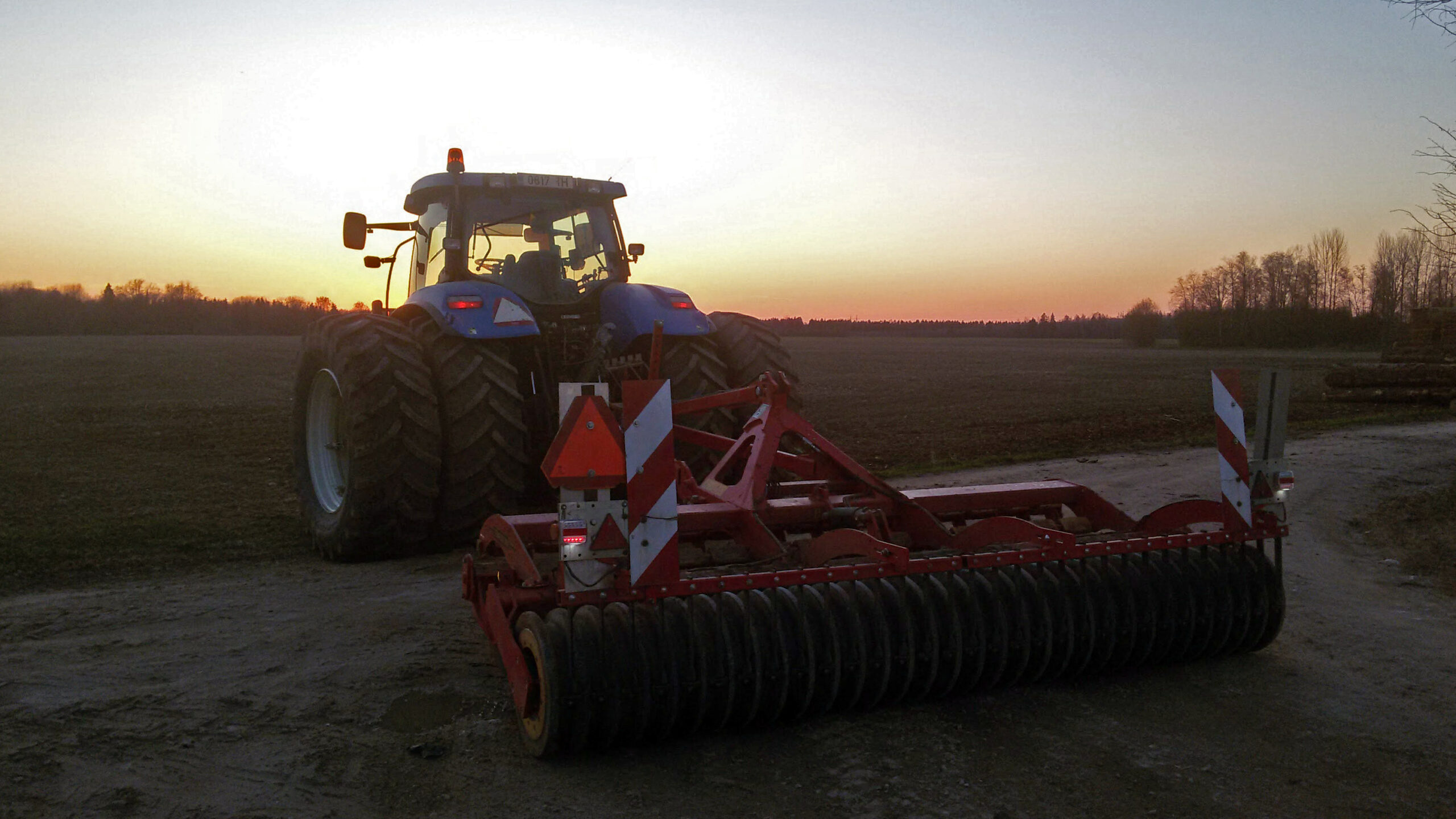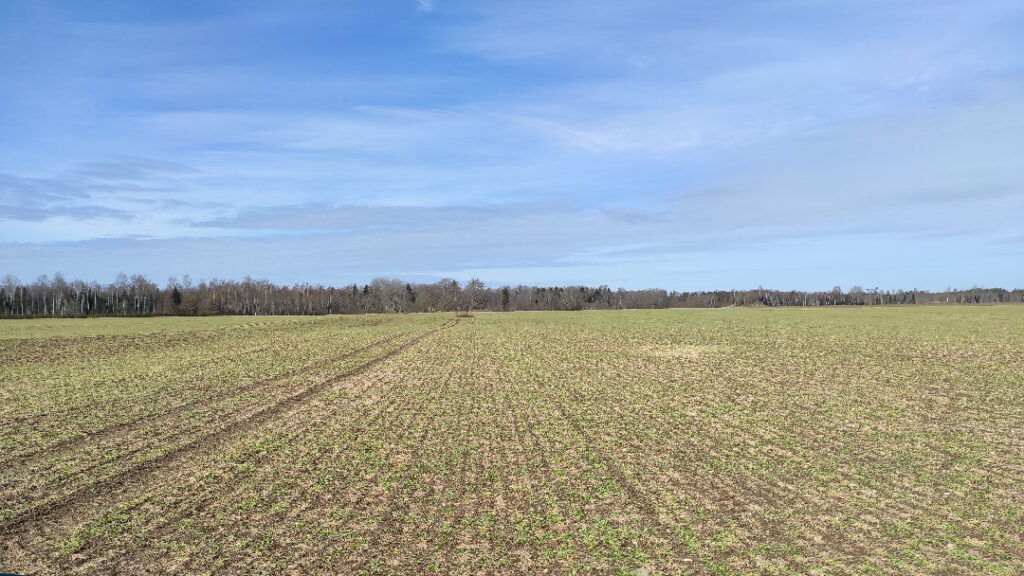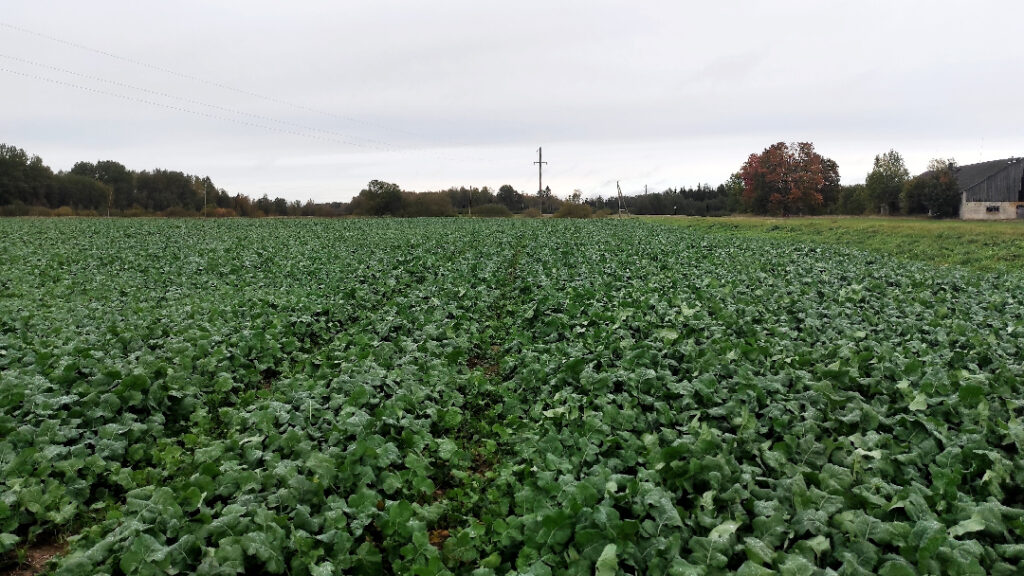Basics at first
Plowing – Soil cultivation depth from 20cm. The most intensive way to cultivate the land. Plowing has been practiced for about as long as agriculture itself has existed. Despite the millennia, plowing has remained essentially the same – before a new sowing, the soil is turned over, meaning the lower layer of soil is brought to the surface, and the upper layer, along with plant residues, weeds, etc., is taken to the plowing depth, allowing crops to start growing on clean soil.
Minimum Tillage – Cultivation depth from a couple of cm to 15-20cm. In minimum tillage, there is no turning of the soil; instead, it is only mixed. Plant residues are mixed with the soil, and with the action of soil bacteria, they begin to decompose. It does not disrupt the soil structure as much as plowing, but it is not as effective in limiting weed growth.
Direct Seeding – The cultivation depth itself is not specified (usually limited to the sowing depth) because the goal of direct seeding is not to in any way disturb or move the soil so that the soil structure is preserved, and sowing takes place within the residues of the previous crop.
Ploughing – It’s a task that I really don’t like, and I plough as minimally as possible. But why ploughing is a worthwhile way of cultivating the land?
Lately, ploughing for me has been aimed at turning some grassland into arable land, and there is no better option for that than ploughing. Firstly, the plough successfully buries grass, roots, etc., and secondly, the field can only be properly leveled with ploughing.
Covering a large amount of straw. Although the straw remains finely chopped in my fields, it still needs to be somehow “disposed of” and many farmers plough ahead of winter rape sowing specifically for the purpose of burying straw, and rapeseed also prefers looser soil.
Limiting weed growth. If you want a perfectly clean field from weeds, ploughing provides strong prerequisites for that. All seeds in the topsoil are turned deep into the ground where they generally lose their germination ability.
Combatting pests and diseases. Plant residues are an ideal place for various diseases and pests to thrive. Burying them through ploughing significantly reduces their prevalence.
Why I Dislike Plowing
Time consuming. I operate alone on nearly 300 hectares, and the fields are not near farm, so time efficiency is crucial. With a 4-furrow reversible plow, I plow about 10 hectares per day, and with a 6-meter cultivator, I cover 30 hectares per day, making a threefold difference.
Costly. A plow is a piece of metal dragged through the soil, leading to significant fuel and metal consumption. The prices of fuel and, especially, spare parts have seen a substantial increase, IMHO the costs do not justify the returns.
Additional work comes with plowing. In my case, it involves plowing and 2 rounds of cultivating/harrowing/rolling to make the field smooth and ready for sowing.A seed drill with a rotary tiller that can perform cultivation and sowing in one pass is available, but we have too many large stones that damage the machine
Not soil-friendly. It’s a debatable issue as studies provide different results on whether the soil likes it or not. In my experience, plowed fields bear machines badly when its wet , and there is a significant risk of wind erosion in dry spring
Minimal tillage
My preferred way of cultivating fields. For years, I used a disc harrow (with disc blades as working tools), and now, for the third season, a stubble cultivator (with tines as working tools).
Speed – compared to plowing, the time savings are multiple. Working almost alone, time consumption is crucial, especially during wet autumns and dry springs when I don’t want to spend too much time on cultivation. In Estonia, the window of time is crucial, and even a few days later sown crop can result in poorer yields at harvest.
Costs – Since minimal tillage implements have less contact area with the soil and operate at a lower depth, the metal and fuel consumption per hectare is lower.
Soil bearing capacity – In wet springs or autumns, minimally tilled fields bear weight better than plowed ones. Disc harrows tend to compact the soil too much and create excessively wet areas, but fields cultivated with a stubble cultivator have an increasingly better drainage system.
Erosion control – Plant residues left on the soil serve as protection against wind, which can carry away the most fertile topsoil.
Although my preference is minimal tillage, it also has some drawbacks.
Plant residues – Despite using good equipment, managing straw remains challenging, requiring multiple operations without achieving the same quality as plowing.
Field smoothness – At high speeds, implements tend to jump on the field, especially when there are many stones or you are tilling parallel to sowing, leaving the field wavy. Getting a field smooth again takes years or requires plowing, guess where I know it from…
Implement selection – If you have different soil types selecting the correct packing roller is important. I prefer a heavy metal roller that breaks up soil clods and leaves a properly compacted, even surface. However on light soil, the roller may start to “sink” and pull the soil ridge into the middle of the field.
Weather factor – Plowing can be done in almost any weather – from rain to snow – as long as the tractor’s wheels are not spinning freely. Working with reduced tillage implements in mud is impossible because the packing roller no longer turns.
Direct Seeding – A cultivation method I’d like to adopt. What do I like about it?
Speed – Compared to reduced tillage, direct seeding is even faster. The only implement disturbing the soil in the field is the seeder. With it, you place seeds and fertilizer directly into the residue of the previous crop in one operation.
Cost Savings – Soil cultivation is a fuel-intensive task, and the working parts of implements wear out with soil contact. A plow, harrow, cultivator, and conventional seeder, each of them needs maintenance. Also purchase means tens or even hundreds of thousands of euros in investments.
Soil Erosion – Since the field is constantly covered either with growing crops or residues from the previous crop, there is virtually no bare soil that could be carried away by the wind.
Improved Soil Health – Higher population of earthworms, better water drainage, better load-bearing capacity in wet conditions, and greater resistance to drought and excess moisture. Direct seeding also plays a significant role in reducing the carbon footprint, a crucial aspect in the current times.
Direct seeding challenges
Learning Curve: Contrary to the notion of selling traditional tillage equipment, buying a direct seeder, and seamlessly continuing, the reality involves a learning curve. Understanding one’s soils, fields, implementing proper crop rotation, and addressing factors like pest control are crucial. Expect initial mistakes and money loss.
Crop Protection: Crop residues provide ideal breeding grounds for pests, diseases, and increased weed presence. A robust crop protection program is essential, likely requiring more spraying rather than less. Considering the European Union’s trend towards reducing pesticide use, managing fields efficiently becomes a crucial consideration without significant yield sacrifices.
Field Condition: Fields should ideally be as smooth as possible for uniform plant emergence. Working with a sprayer or combine on fields full of mounds and depressions is tiresome and may lead to breakdowns. If ruts form in the field, cultivation or even plowing may be necessary, nullifying the soil health improvements achieved through direct seeding.



